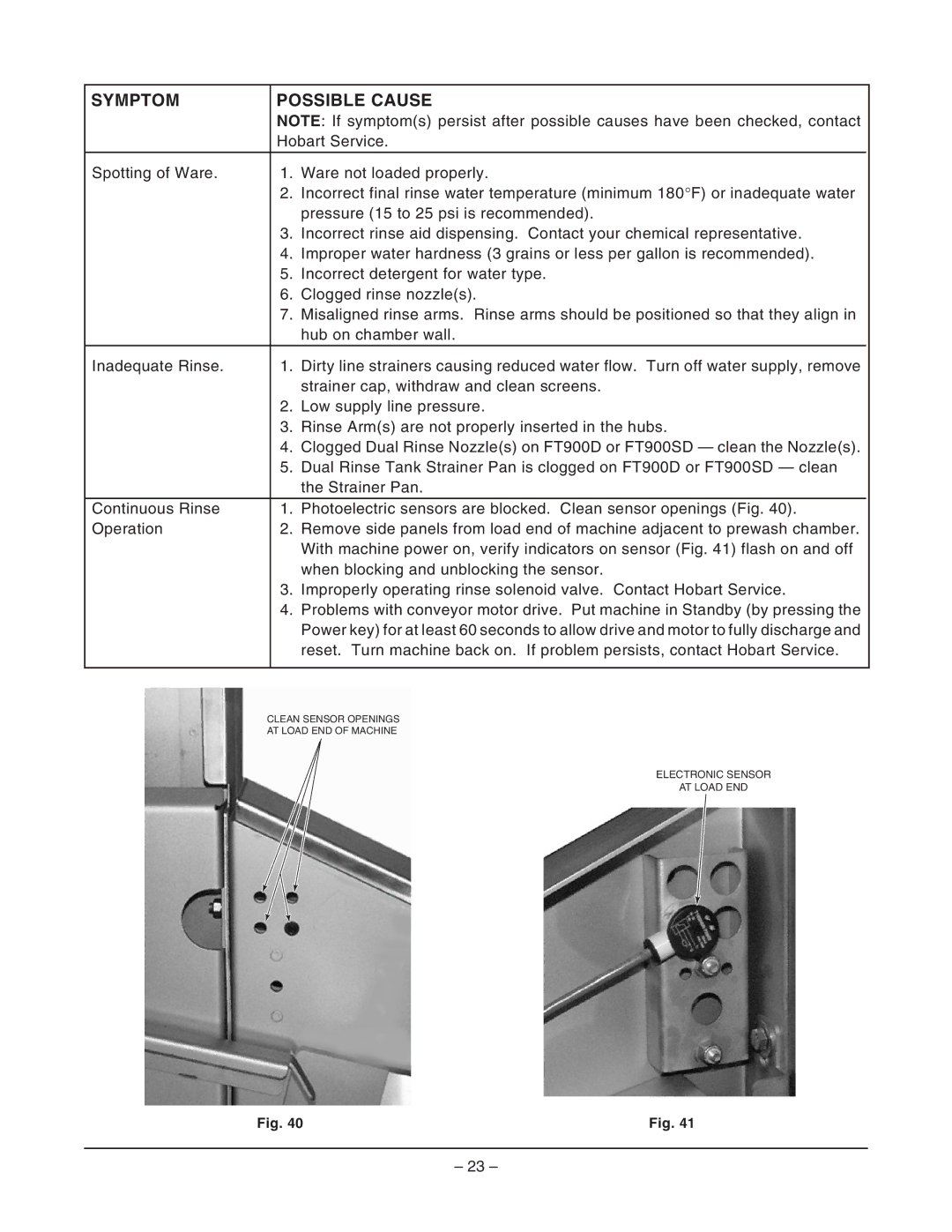
SYMPTOM | POSSIBLE CAUSE |
| |
| NOTE: If symptom(s) persist after possible causes have been checked, contact |
| |
| Hobart Service. |
| |
|
|
| |
Spotting of Ware. | 1. Ware not loaded properly. |
| |
| 2. | Incorrect final rinse water temperature (minimum 180°F) or inadequate water |
|
|
| pressure (15 to 25 psi is recommended). |
|
| 3. | Incorrect rinse aid dispensing. Contact your chemical representative. |
|
| 4. | Improper water hardness (3 grains or less per gallon is recommended). |
|
| 5. | Incorrect detergent for water type. |
|
| 6. | Clogged rinse nozzle(s). |
|
| 7. | Misaligned rinse arms. Rinse arms should be positioned so that they align in |
|
|
| hub on chamber wall. |
|
|
|
| |
Inadequate Rinse. | 1. Dirty line strainers causing reduced water flow. Turn off water supply, remove |
| |
|
| strainer cap, withdraw and clean screens. |
|
| 2. | Low supply line pressure. |
|
| 3. | Rinse Arm(s) are not properly inserted in the hubs. |
|
| 4. | Clogged Dual Rinse Nozzle(s) on FT900D or FT900SD — clean the Nozzle(s). |
|
| 5. | Dual Rinse Tank Strainer Pan is clogged on FT900D or FT900SD — clean |
|
|
| the Strainer Pan. |
|
|
|
| |
Continuous Rinse | 1. Photoelectric sensors are blocked. Clean sensor openings (Fig. 40). |
| |
Operation | 2. Remove side panels from load end of machine adjacent to prewash chamber. |
| |
|
| With machine power on, verify indicators on sensor (Fig. 41) flash on and off |
|
|
| when blocking and unblocking the sensor. |
|
| 3. | Improperly operating rinse solenoid valve. Contact Hobart Service. |
|
| 4. | Problems with conveyor motor drive. Put machine in Standby (by pressing the |
|
|
| Power key) for at least 60 seconds to allow drive and motor to fully discharge and |
|
|
| reset. Turn machine back on. If problem persists, contact Hobart Service. |
|
|
|
|
|
CLEAN SENSOR OPENINGS
AT LOAD END OF MACHINE
ELECTRONIC SENSOR
AT LOAD END
Fig. 40 | Fig. 41 |
– 23 –
